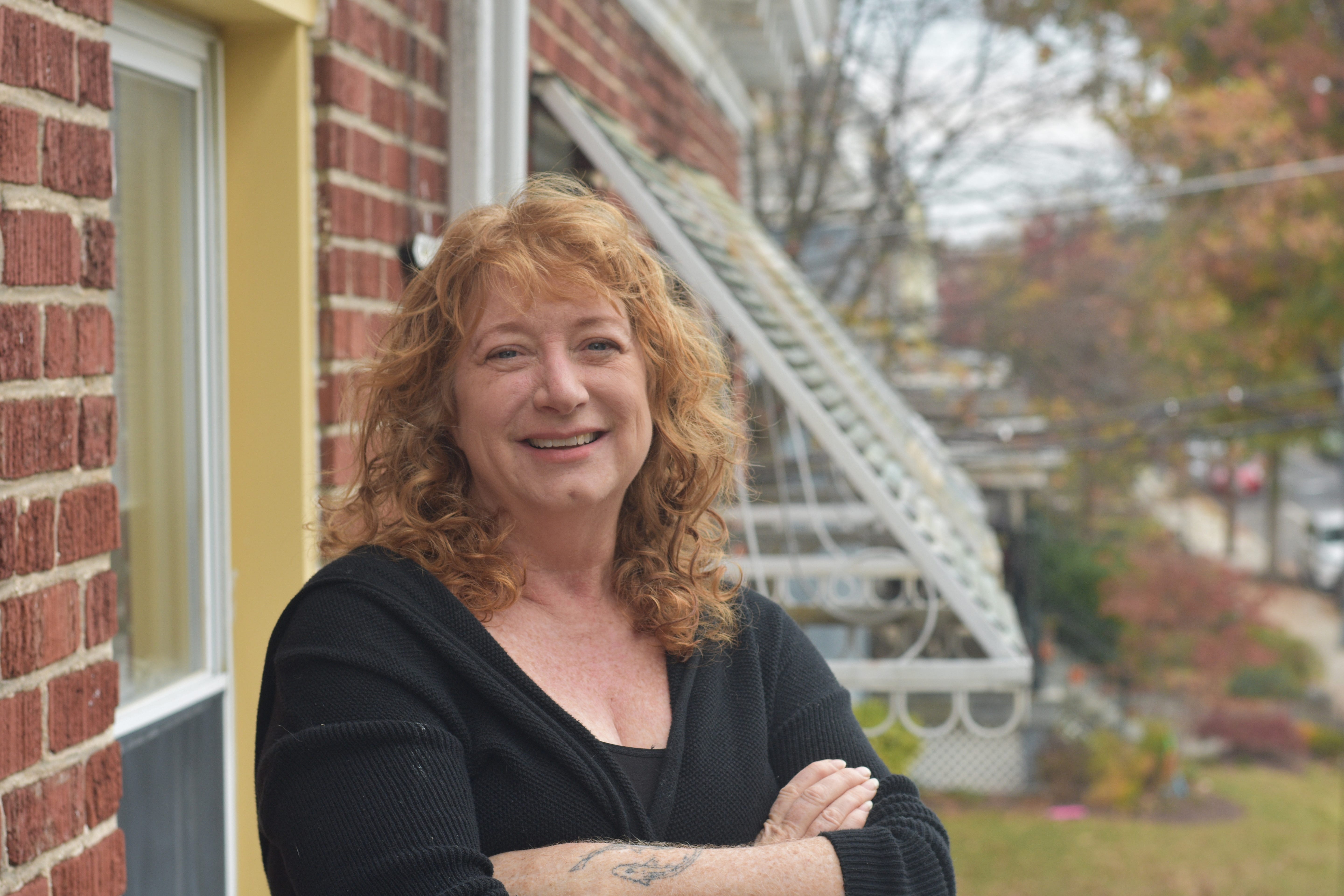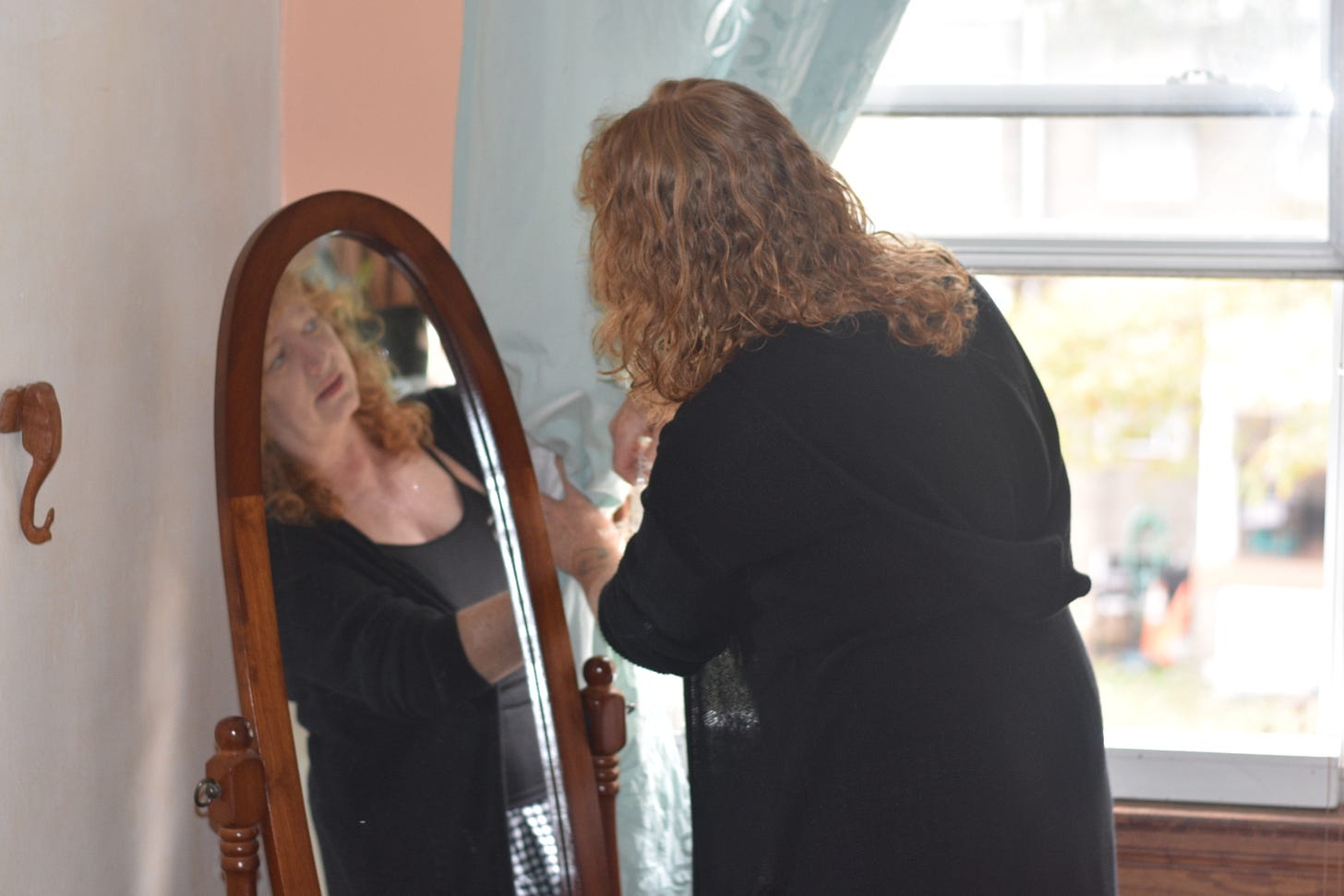DC ended the green roof rebate for its residents in September. One climate activist can't imagine her home without one.
'It's a shame,' Dr. Annette Olson said about the ending of the program that saved her roof and allowed individuals to have a climate impact.

Dr. Annette Olson wasn’t prepared to hear the roof over her home was caving in.
Hot, gloopy, and decayed. Musty, perished, and rotten.
The words her contractors used when she decided she needed to redo her roofing back in 2012. With weakened wood and piping black asphalt tarnishing the composition of her roof, the view of her quiet Petworth neighborhood street was slowly overcome with a sulfurous smell and a serious safety issue for her home.
Although the corroded state of her porch was picked apart piece by piece, the future renovation in the works not only introduced Olson to designing a newer, cleaner rooftop, but a greener one too.
As a fierce advocate for climate change and progressive sustainability, Olson was no stranger to the concept of green roofs, hearing about them for years before finally deciding to build one for her home.
According to Green Roofs for Healthy Cities, “a green roof system is an extension of the existing roof which involves, at a minimum, high quality waterproofing, root repellent system, drainage system, filter cloth, a lightweight growing medium, and plants.” Aiding in stormwater collection, filtration, and runoff, green roofs are supplemented and adapted to previously constructed buildings, inspiring each version of green roof technology to be uniquely different.
They help cool down water runoff and homes, limit flooding and reduce stormwater pollution into the nearby waterways, according to the Department of Energy and the Environment (DOEE).
For Olson’s home, which adorns hand-painted murals of koi fish, foliage hanging from the ceilings to the stairwell, and fosters her three fluffy cats, Little Bit, Bump, and Callie, the addition of a green roof fit right in for her.

Her once moldy and dull roof is now blanketed with a vibrant medley of sedum succulents, the same ones that bloom bright flowers in the Spring. This clover-like vegetation creates a peaceful atmosphere floating above her quaint, brick row house, not only being her favorite place to be each morning, but encouraging greater green infrastructure practices on the residential level as well.
“[The green roof] will save massive amounts of heat loss and cool air loss, it is a great insulator. And the green roof is supposed to last up to 60 years unlike other roofs that last 15-20 years,” Olson said. “ I think most homeowners don't realize the long term value of the green roof – the lack of repair needed and the insulation provided. I was lucky to be able to put it on my front porch roof where I could see it.”
Learning to live by greener standards was the standard for Olson, a proud vegetarian for 30 years, even after growing up on a cattle farm in Van Alstyne, Texas. She kept to her choices, living more eco-friendly through the years, even leading her 90-year-old cattle rancher father to try, and even enjoy, vegan meat to this day. A self-proclaimed wild child, Olson was most at home in the outdoors, evolving her love of going out onto the pastures into a passion for hands-on biological research during her time at college.
“People were pushing me into [medical] school but then I worked at a hospital for two summers and decided this is not for me, I took my first field biology course. I loved working in the field since I am a big outdoors person,” she said. “So then I decided, you know what, I am gonna go for it, the Indiana Jones movie had just come out and I wanted an adventure.”
She continued research at the Smithsonian National Zoological Park where she sparked a new interest in conservation and grassroots efforts, even though her superiors and colleagues thought those undertakings would not be useful. Olson still felt her efforts at any scale could make a difference, so she set out to forge a path of building greener local communities.
Olson found her stride is localizing community action, and when her decayed roof sought immediate change in her living space, a greener one was the solution.
The Anacostia Watershed Society collaborated with Olson to design and build her new roof. As a part of the deal, they would provide materials and labor for the project as long as Olson would show off the green infrastructures in her home to the public, even sporting a gold plaque recognition from the society on her front porch.

With the help of a structural engineer, Olson’s roof was made stronger and more durable for the weight of the filtration vegetation, rainfall, and eventual snow. They even had to account for the weight of a person to step onto the green roof for routine maintenance throughout the year.
The process included a rebate from the city – at the time of her renovation in 2012, Olson received a $3 rebate per square footage of her roof from the DC RiverSmart Green Roof program.
“There is no doubt it was small, but it was something at least,” Olson said.
The citywide program eventually increased the rebate to $15 dollars per square foot in 2019 due to the lack of participation year to year, Andrew Oetman said.
Oetman is an Environmental Protection Specialist with the DOEE and has worked with the RiverSmart residential rebate programs for almost 12 years. Despite the benefits of the residential green roofs for the environment, the barriers to get them on Washington homes became too much for the program to continue, he said.
“We made a decision after several years of very little participation and increased funding, increased outreach, increased support for the program,” Oetman said. “And we decided that we are getting so many [commercial] installs through regulation now for green roofs and the challenges on the residential scale are so difficult that it just didn't make sense to focus our time and energy on green roofs at that scale.”
From the inception of the Green Roof Rebate program in 2008 to this September when the program was sun-setted, the square footage of green roofs in the city halved, then quartered until the numbers in 2019 were just 3% of the original 120,000 square feet of green roofs at the start, he said.
This is why each year the rebate value increased from the original $3 per square foot to $15 per square foot to incentivize and make it easier for residents to achieve the roofs. The cost wasn’t the only barrier to participation in the program.
Like Olson’s roof, the already established homes have to be retrofitted to hold the weight of the green infrastructure and have to have easy access to the roof for contractors and residents to build and maintain the projects through the roofs.

“Green roofs are particularly heavy,” he said. “ And so it can be really challenging to retrofit an old, let's say row house or typical DC residential building so that the roof is strong enough to handle the weight of the green roof.”
The distribution of the green roofs to the different wards in Washington is not close to being equitable, Oetman admits.
It's a challenge that we still work on. [Washington] is a very diverse place. And in so many different ways, it's very interesting and challenging.
-Andrew Oetman
For residents in Ward 1, which includes Olson’s neighborhood of Petworth, only 9.4% of the city’s green roof rebates were used there – only 14 homes, according to Open Data DC. Wards 5, 7 and 8 also fall behind, with Ward 6 accounting for 34.5% of the residential green roofs. Wards 2 and 3 have higher numbers as well, noting the wealthier and whiter neighborhoods participating more in these programs.
“Especially if you're lower income, it's hard to schedule an appointment, take an hour, hour and a half out of your workday to come meet. And so we've tried to do different things, like offer virtual meetings and assessments,” Oetman said. “It's a challenge that we still work on. [Washington] is a very diverse place. And in so many different ways, it's very interesting and challenging, but we do see growth rates across all 8 wards.”
“It’s a shame,” Olson said as she reacted to the news of the green roof program ending. She looked down at her feet which were standing gently on the green blanket wrapped around her roof.
“Word just hasn't got it out that regular people can do this. And it's expensive,” Olson said. “I was lucky because it could be done because I was getting the roof done anyway. Hopefully it'll come back.”
She wakes up each and every morning to sit out on the window sill with the vibrant greens, reds and pinks that cover her roof. It is hard for her to imagine enjoying her mornings without it – not a morning person, she said.

“Just to look out at it in the morning is much more fun and… very little work,” she said, focusing harder on the succulents. “I've been looking for weeds, and I haven't seen a single weed. Oh, yep, there's one.”
Oetman said the other RiverSmart Rebate programs which are easier and cheaper to install – rain barrels, rain gardens, bayscaping – are still quite popular programs and will continue despite the green roof program ending.
Citizens have a lot of power… I don't have a positive outlook for the future, in terms of climate change, but I do have a positive outlook on people.
-Dr. Annette Olson

In addition to the roof, Olson installed a rain barrel and rain garden as well. Her three foster kittens love to play in the tall grasses and lilies of the rain garden, she said.
“A lot of conversations out there, especially by some climate scientists, have been like you can’t make a personal impact, but they are wrong,” Olson said. “Citizens have a lot of power… I don't have a positive outlook for the future, in terms of climate change, but I do have a positive outlook on people.”



